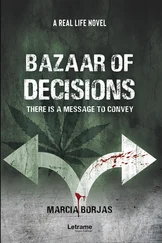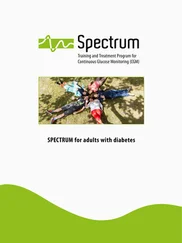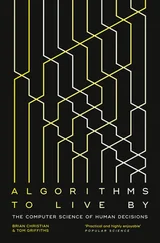George F. Elmasry - Dynamic Spectrum Access Decisions
Здесь есть возможность читать онлайн «George F. Elmasry - Dynamic Spectrum Access Decisions» — ознакомительный отрывок электронной книги совершенно бесплатно, а после прочтения отрывка купить полную версию. В некоторых случаях можно слушать аудио, скачать через торрент в формате fb2 и присутствует краткое содержание. Жанр: unrecognised, на английском языке. Описание произведения, (предисловие) а так же отзывы посетителей доступны на портале библиотеки ЛибКат.
- Название:Dynamic Spectrum Access Decisions
- Автор:
- Жанр:
- Год:неизвестен
- ISBN:нет данных
- Рейтинг книги:3 / 5. Голосов: 1
-
Избранное:Добавить в избранное
- Отзывы:
-
Ваша оценка:
- 60
- 1
- 2
- 3
- 4
- 5
Dynamic Spectrum Access Decisions: краткое содержание, описание и аннотация
Предлагаем к чтению аннотацию, описание, краткое содержание или предисловие (зависит от того, что написал сам автор книги «Dynamic Spectrum Access Decisions»). Если вы не нашли необходимую информацию о книге — напишите в комментариях, мы постараемся отыскать её.
dynamic spectrum access approach using the latest applications and techniques
Dynamic Spectrum Access Decisions: Local, Distributed, Centralized and Hybrid Designs Dynamic Spectrum Access Decisions · Licensed spectrum bands
· Unlicensed spectrum bands
· Civilian communications
· Military communications
Consisting of a set of techniques derived from network information theory and game theory, DSA improves the performance of communications networks. This book addresses advanced topics in this area and assumes basic knowledge of wireless communications.
Dynamic Spectrum Access Decisions — читать онлайн ознакомительный отрывок
Ниже представлен текст книги, разбитый по страницам. Система сохранения места последней прочитанной страницы, позволяет с удобством читать онлайн бесплатно книгу «Dynamic Spectrum Access Decisions», без необходимости каждый раз заново искать на чём Вы остановились. Поставьте закладку, и сможете в любой момент перейти на страницу, на которой закончили чтение.
Интервал:
Закладка:
4 Chapter 4 Figure 4.1 Trade space to be considered for hybrid DSA decision fusion. Figure 4.2 Local decision fusion based on single‐dimensional knowledge base. Figure 4.3 Decision fusion based on two‐dimensional knowledge base. Figure 4.4 The interface between a cognitive routing engine and a cognitive ... Figure 4.5 Pointing directions between two nodes. Figure 4.6 Local and gateway nodes cognitive engines. Figure 4.7 Conceptual view of how control traffic volume depends on updating... Figure 4.8 The use of a centralized DSA arbitrator in a hybrid DSA system of... Figure 4.9 The use of a centralized DSA arbitrator can further optimize spec...
5 Chapter 5 Figure 5.1 The construct of DSA as a set of cloud services in network hierar... Figure 5.2 The generic cognitive engine representation that can be used at a... Figure 5.3 The main thread in the central arbitrator. Figure 5.4 Gateway DSA cognitive engine thread for a frequency change. Figure 5.5 Gateway DSA engine upward propagation of spectrum sensing informa... Figure 5.6 The DSA cloud services model. Figure 5.7 Iterative process to create a workable DSA service agreement.
6 Chapter 6 Figure 6.1 Standalone mm‐wave 5G access. Figure 6.2 Nonstandalone mm‐wave 5G access. Figure 6.3 5G access with the mm‐wave as an enabler. Figure 6.4 Traditional cellular frequency spatial separation planning. Figure 6.5 Single flow in a cell area of coverage. Figure 6.6 Multi‐flow, each with a single hop to a different cell. Figure 6.7 Transmission capacity general model. Triangles represent idle nod... Figure 6.8 5G cell overlay over cellular base station. Figure 6.9 5G FD communications with different stages of noise cancellation.... Figure 6.10 5G protocol stack. Figure 6.11 The compound overlay of 5G entities in a 5G deployment. Figure 6.12 5G use of the macrocell as the fusion center. Figure 6.13 Autonomous SAs in a distributed cooperative fashion and their co... Figure 6.14 The end use as the final arbitrator.
7 Chapter 7 Figure 7.1 Adapting the 5G protocol stack into a military secure stack with ...Figure 7.2 Selecting a path to avoid a compromised area through beamforming....
8 Chapter 8Figure 8.1 The power spectral density of a typical signal versus frequency. 3Figure 8.2 The IEEE frequency band chart.Figure 8.3 Adapting a standard platform co‐site interference analysis proces...Figure 8.4 Creating DSA co‐site interference lookup tables for external syst...Figure 8.5 Creating different co‐site lookup tables for an external system f...
9 Chapter 9Figure 9.1 Electromagnetic spectrum competition. From Techniques for ...Figure 9.2 The electromagnetic operational environment (EMOE). From T...Figure 9.3 Army spectrum management operations process. From Techniqu...
10 Chapter 10Figure 10.1 Use of the electromagnetic spectrum. From Techniques for ...Figure 10.2 CEMA working group organizational framework. From Techniq...Figure 10.3 Key SMO inputs to the MDMP. From Techniques for Spectrum ...
11 Chapter 11Figure 11.1 Spectrum situational awareness system and CJSMPT support ...
12 Chapter 12Figure 12.1 Interagency workflow in a joint task force environment. F...Figure 12.2 JFMO structure. From Techniques for Spectrum Management O...Figure 12.4 Spectrum manager inputs for a JSME. From Techniques for S...Figure 12.5 Spectrum management support during domestic operations. F...
13 Chapter 13Figure 13.1 S2AS and supporting equipment. From Techniques for Spectr...Figure 13.2 S2AS in use by Soldiers. From Techniques for Spectrum Man...Figure 13.3 S2A2 functional relationships. From Techniques for Spectr...
14 Chapter 13aFigure A.1 The SMO to EW collaboration process. From Techniques for Spectrum...Figure A.2 The G‐6 or S‐6 spectrum manager's tasks. From Techniques for Spec...Figure A.3 The CEMA element tasks. From Techniques for Spectrum Management O...Figure A.4 SMO collaboration tasks. From Techniques for Spectrum Management ...
15 Chapter 13cFigure C.1 Waveform characteristics. From Techniques for Spectrum Managemen...Figure C.2 Wavelength relationship. From Techniques for Spectrum Management...Figure C.3 Transmission and propagation of electromagnetic waves. From Tech...
16 Chapter 13eFigure E.1 World military time zone designator chart. From Technique...
17 Chapter 14Figure 14B.1 —Illustration of advanced radio system concepts for radio trans...Figure 14B.2 —Relationship of radio types: Software‐defined radio, hardware ...Figure 14B.3 —Relationship of radio types: Addition of cognitive radio and a...Figure 14B.4 —Relationship of radio types: Addition of reconfigurable radio ...Figure 14B.5 —Relationship of radio types: Cross‐reference of permitted radi...Figure 14B.6 —Components of an adaptive radio that employs a policy‐based co...Figure 14B.7 —Key technology components of representative policy‐based radio...Figure 14C.1 —Conceptual timeline for advanced radio system technologies. Fr...
18 Chapter 15Figure 15.1 Overview of the interference and coexistence analysis process. F...Figure 15.2 An interference and coexistence analysis initially is characteri...Figure 15.3 Process diagram of the scenario definition clause. From IEEE Rec...Figure 15.4 Frequency relationships. From IEEE Recommended Practice for the ...Figure 5.5 Categories of spectrum cooperation between systems. From IEEE Rec...Figure 15.6 Process diagram for criteria for interference clause. From IEEE ...Figure 15.7 User/measurement event graph. From IEEE Recommended Practice for...Figure 15.8 Harmful interference categories. From IEEE Recommended Practice ...Figure 15A.1 Standard atmosphere with knife‐edge shape peak at 1400 m. From ...Figure 15A.2 Atmosphere defined by Payerne radiosonde profile of Oct. 15, 20...Figure 15B.1 Conceptual model of RF interference level. From IEEE Recommende...Figure 15D.1 Capacity as a function of the monitoring threshold limit (free ...Figure 15F.1 Probability of missed detection as a function of distance with ...
19 c16Figure 16.1 Heterogeneous wireless environment considered in IEEE Std 1900.4...Figure 16.2 —System architecture. From IEEE Standard for Architectural Build...Figure 16.3 IEEE 1900.4 reference model. From IEEE Standard for Architectura...Figure 16.4 Functional architecture. From IEEE Standard for Architectural Bu...Figure 16.5 Common base class. From IEEE Standard for Architectural Building...Figure 16.6 Policy classes. From IEEE Standard for Architectural Building Bl...Figure 16.7 Terminal‐related classes. From IEEE Standard for Architectural B...Figure 16.8 CWN‐related classes. From IEEE Standard for Architectural Buildi...Figure 16.9 Single operator scenario. From IEEE Standard for Architectural B...Figure 16.10 Multiple operator scenario 1 (NRM is inside operator). From IEE...Figure 16.11 Multiple operator scenario 2 (NRM is outside operators). From I...Figure 16.12 Collecting context information procedure for single operator sc...Figure 16.13 Collecting context information procedure for multiple operator ...Figure 16.14 —Collecting context information procedure for multiple operator...Figure 16.15 —Generating spectrum assignment policies procedure for single o...Figure 16.16 —Generating spectrum assignment policies procedure for multiple...Figure 16.17 —Generating spectrum assignment policies procedure for multiple...Figure 16.18 —Making spectrum assignment decision procedure for single opera...Figure 16.19 —Making spectrum assignment decision procedure for multiple ope...Figure 16.20 —Making spectrum assignment decision procedure for multiple ope...Figure 16.21 —Performing spectrum access on network side procedure for singl...Figure 16.22 —Performing spectrum access on network side procedure for multi...Figure 16.23 —Performing spectrum access on network side procedure for multi...Figure 16.24 —Generating radio resource selection policies procedure for sin...Figure 16.25 —Generating radio resource selection policies procedure for mul...Figure 16.26 —Performing reconfiguration on terminal side procedure for sing...Figure 16.27 —Example of dynamic spectrum assignment use case realization. F...Figure 16.28 —Example of dynamic spectrum sharing use case realization. From...Figure 16.29 —Example of distributed radio resource usage optimization use c...Figure 16A.1 —Dynamic spectrum assignment: single operator scenario. From IE...Figure 16A.2 —Dynamic spectrum assignment: multiple operator scenario 1 (NRM...Figure 16A.3 —Dynamic spectrum assignment: multiple operator scenario 1 (NRM...Figure 16A.4 —Dynamic spectrum assignment: multiple operator scenario 2 (NRM...Figure 16A.5 —Dynamic spectrum assignment: multiple operator scenario 2 (NRM...Figure 16A.6 —Dynamic spectrum sharing. From IEEE Standard for Architectural...Figure 16A.7 —Distributed radio resource usage optimization. From IEEE Stand...Figure 16B.1 —UML class diagram for common base class. From IEEE Standard fo...Figure 16B.2 —UML class diagram for policy classes. From IEEE Standard for A...Figure 16B.3 —UML class diagram for terminal classes. From IEEE Standard for...Figure 16B.4 —UML class diagram for CWN classes. From IEEE Standard for Arch...Figure 16B.5 —UML class diagram defining relations between terminal and CWN ...Figure 16D.1 —UML class diagram for utility classes. From IEEE Standard for ...Figure 16D.2 —Description of example. From IEEE Standard for Architectural B...Figure 16E.1 —Single operator scenario, deployment example 1. From IEEE Stan...Figure 16E.2 —Single operator scenario, deployment example 2. From IEEE Stan...Figure 16E.3 —Single operator scenario, deployment example 3. From IEEE Stan...Figure 16E.4 —Single operator scenario, deployment example 4. Fr...Figure 16E.5 —Deployment example for multiple operator scenario 1. From IEEE...
Читать дальшеИнтервал:
Закладка:
Похожие книги на «Dynamic Spectrum Access Decisions»
Представляем Вашему вниманию похожие книги на «Dynamic Spectrum Access Decisions» списком для выбора. Мы отобрали схожую по названию и смыслу литературу в надежде предоставить читателям больше вариантов отыскать новые, интересные, ещё непрочитанные произведения.
Обсуждение, отзывы о книге «Dynamic Spectrum Access Decisions» и просто собственные мнения читателей. Оставьте ваши комментарии, напишите, что Вы думаете о произведении, его смысле или главных героях. Укажите что конкретно понравилось, а что нет, и почему Вы так считаете.












